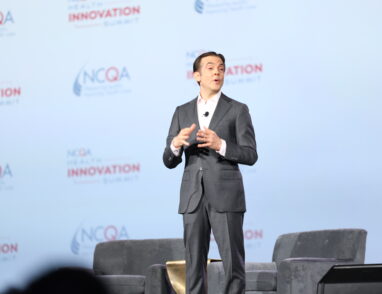Social well-being in the workplace: An equity perspective
October 24, 2022 · NCQA Communications
By Neepa Patel, CEO of WellRight, and Vanessa Guzman, president of SmartRise Health
Since the beginning of time, humans have valued and prioritized social connection. So when stay-at-home orders during the height of COVID-19 kept many Americans home from work and away from social gatherings, it’s not surprising that Americans’ level of social connectedness — and overall well-being — took a nosedive.
According to Willis Towers Watson’s 2020 Global Benefits Attitudes Survey, 42% of employees said their social connections worsened due to the pandemic. Reduced social connection can lead to stress, anxiety, and depression at work; decreased productivity; and increased attrition.
With this in mind, employers are paying more attention to social well-being and are incorporating it into their whole-person workplace wellness programs.
However, everyone defines and approaches social connection differently, especially after the pandemic. As employers focus on their workers’ social well-being, they need to build offerings on the basis of diversity, equity, and inclusion.
Building equity into social well-being programs
Diversity and inclusion are already the focus of many companies’ social well-being programs, as they can help build a sense of belonging amongst employees. A 2021 employer survey conducted by Willis Towers Watson indicated the majority of employers planned to promote diversity and inclusion aspects of their benefit programs (72%) and well-being programs (69%) over the next three years. That’s more than double employers that did so in the past three years, according to Willis Towers Watson.
The next step to evolve social well-being in the workplace is to inject equity into wellness programming instead of taking a one-size-fits-all approach.
An equity focus is necessary because different groups are struggling more than others. For instance, Gen Z employees and members of the LGBTQ+ community reported the lowest levels of social well-being in the Willis Towers Watson survey, indicating those groups may need tailored engagement.
To make social well-being offerings more equitable, companies should examine current programming and how it may inadvertently exclude certain groups of people. The classic after work happy hour, for example, may be impractical or unattractive to employees who are parents, have caregiving responsibilities, or who abstain from alcohol.
It’s vital for companies to determine what will work for their employees and build accordingly — the more personalized the solution, the greater likelihood it will be adopted. Anonymous surveys are one way to build baseline knowledge of the workforce, but interpersonal relationships are vital to building equitable wellness programming. Leadership should train and encourage managers to build meaningful relationships with their teams. This will lead to more personalized social engagement strategies.
In general, here are three things companies can do to more equitably support their employees’ social well-being.
 Promote volunteerism. A big part of social wellness is feeling connected to one’s community, and volunteering is a great way to foster that. A report from Aon shows 51% of companies conduct volunteer days to foster social well-being. To make these more inclusive and equitable, companies could provide volunteer time off (VTO) so members of the workforce can choose which organizations they’d like to volunteer with and have adequate time during the week to do so. Employers could also have employees vote on which organizations to support, so workers’ voices are heard, and company values are shared.
Promote volunteerism. A big part of social wellness is feeling connected to one’s community, and volunteering is a great way to foster that. A report from Aon shows 51% of companies conduct volunteer days to foster social well-being. To make these more inclusive and equitable, companies could provide volunteer time off (VTO) so members of the workforce can choose which organizations they’d like to volunteer with and have adequate time during the week to do so. Employers could also have employees vote on which organizations to support, so workers’ voices are heard, and company values are shared.
Sponsor employee resource and affinity groups. Employee resource groups and affinity groups like running clubs or book clubs give coworkers the space to connect with each other in new or different ways. Offering a variety of groups can create opportunities for people to connect with others that they may not have met otherwise.
Offer flexible wellness days. Wellness days can be an important addition to benefits packages that directly impact social well-being. Giving employees the opportunity to connect with their social network on their own time means they come back to the office feeling better adjusted and more productive.
As we look ahead to 2023, building connections among coworkers and to the community should be top of mind for organizations looking to retain and reinvigorate their workforce. Getting a head start on equitably built offerings centered around social wellness will give companies a competitive advantage moving into the new year.







